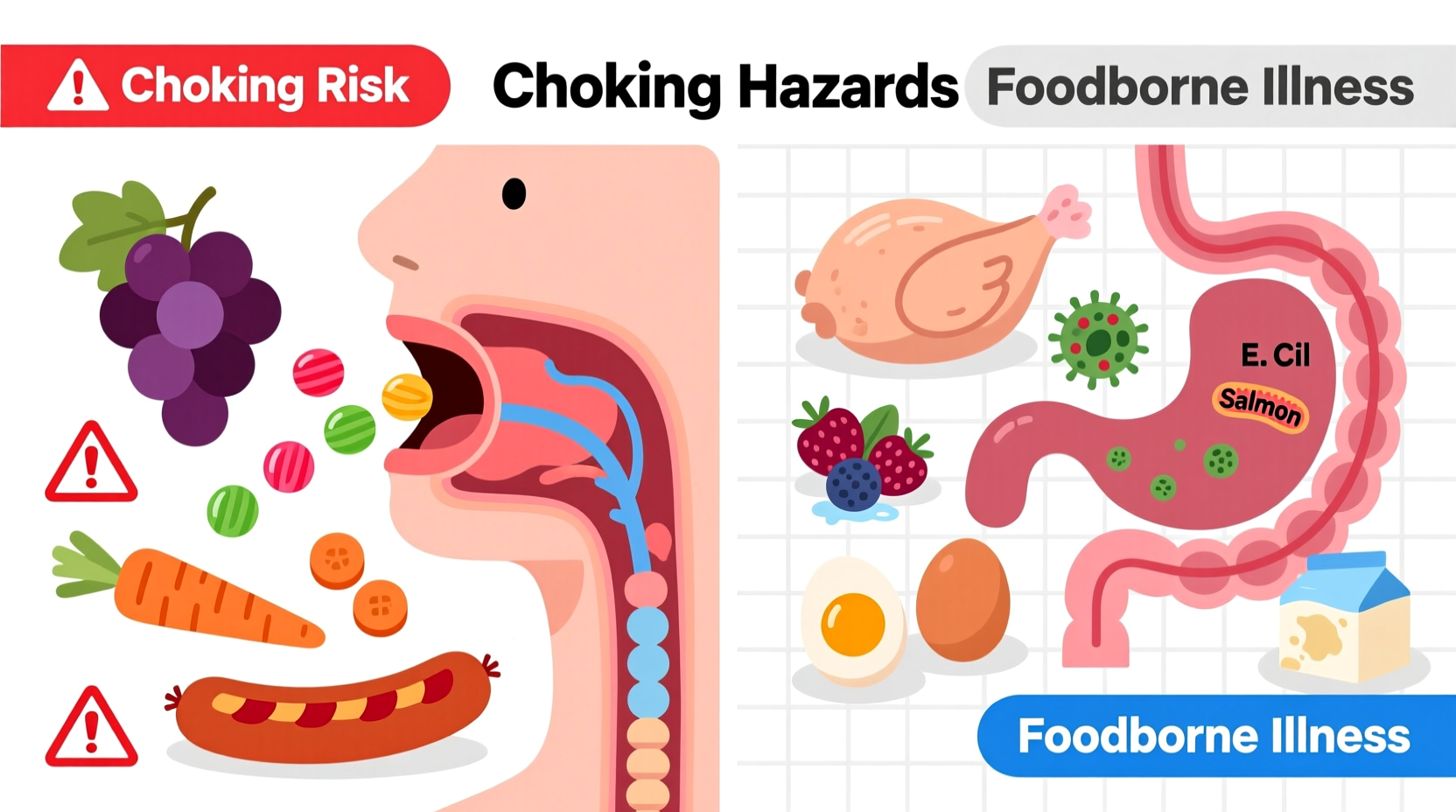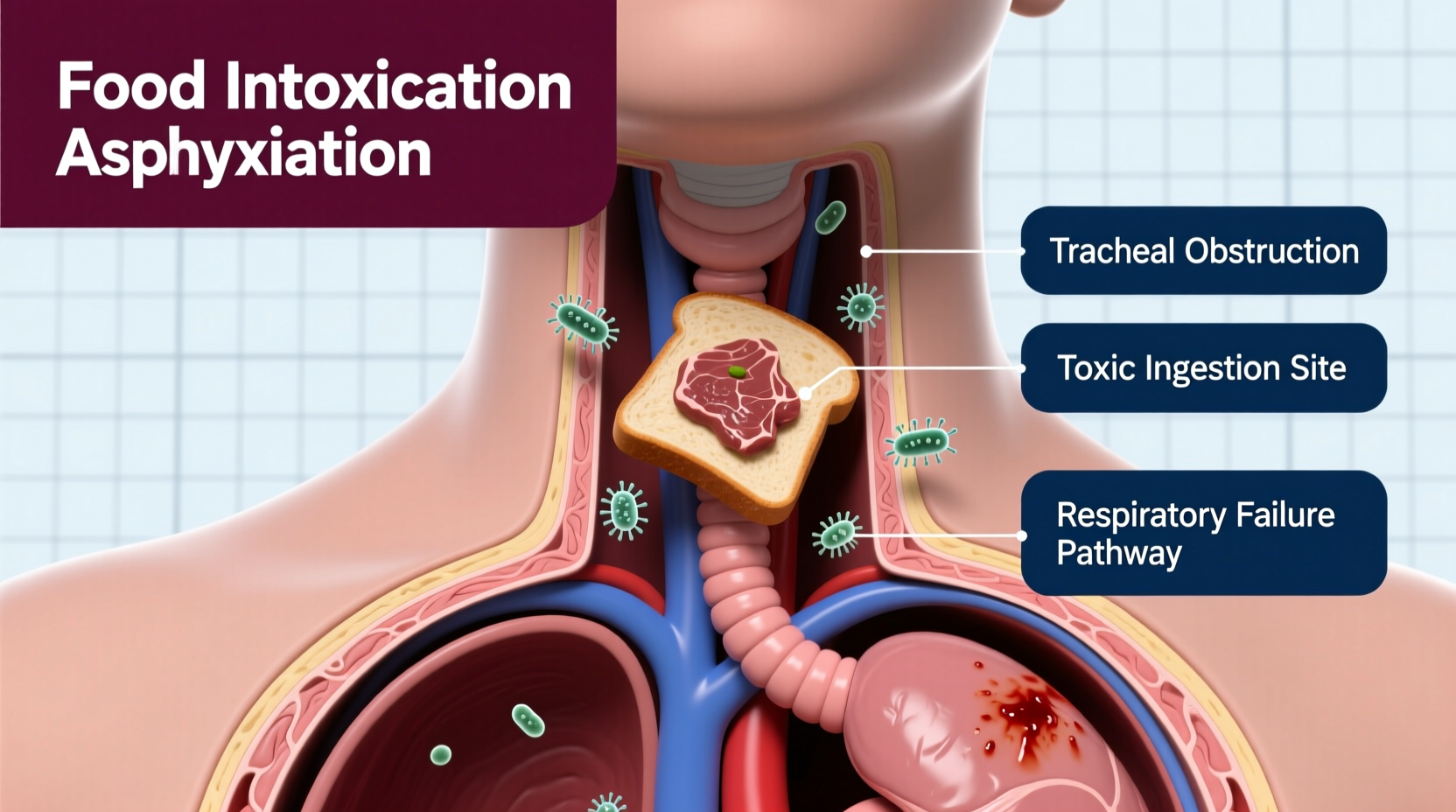Confused by medical terminology? You're not alone. Many people mistakenly combine 'food intoxication' and 'asphyxiation' when searching for health information. This article clarifies both concepts with medically accurate information from authoritative sources, helping you understand what happens when food causes illness versus breathing emergencies.
Understanding the Terminology Confusion
When searching for 'what is food intoxication asphyxiation,' you're likely trying to understand how food can cause serious health issues involving breathing problems. The reality is these are separate medical phenomena:
- Food intoxication occurs when you consume preformed toxins in food (like those from Clostridium botulinum bacteria)
- Asphyxiation refers to oxygen deprivation, which can happen from choking on food but isn't caused by food toxins
Let's examine each condition separately to clear up this common misunderstanding.
What Exactly is Food Intoxication?
Food intoxication (sometimes called foodborne intoxication) happens when you consume food containing preformed toxins produced by microorganisms. Unlike food infections where live pathogens multiply in your body, intoxication symptoms appear quickly because the toxin is already present in the food.
| Food Intoxication Type | Common Source | Onset Time | Key Symptoms |
|---|---|---|---|
| Staphylococcal | Dairy, meats, salads | 1-6 hours | Nausea, vomiting, stomach cramps |
| Botulism | Improperly canned foods | 12-36 hours | Dry mouth, blurred vision, muscle weakness |
| Bacillus cereus | Rice, pasta, sauces | 1-6 hours or 6-15 hours | Nausea, vomiting or diarrhea |
According to the Centers for Disease Control and Prevention, foodborne illnesses affect 1 in 6 Americans annually, with food intoxication cases representing a significant portion of these incidents. The CDC tracks approximately 9.4 million cases of known foodborne pathogens each year, though many cases go unreported.
How Food Can Cause Asphyxiation (Choking)
Asphyxiation related to food occurs through choking - when food blocks the airway. This is mechanically different from food intoxication:
- Choking happens when food becomes lodged in the trachea (windpipe)
- It's an immediate physical obstruction, not a toxin-related illness
- Symptoms appear within seconds to minutes of the blockage
The CDC reports that choking is a leading cause of injury-related death among children under 3 years old, with food being the most common choking hazard. Common high-risk foods include hot dogs, grapes, nuts, and hard candy.

When Food Toxins Affect Breathing: The Botulism Exception
While food intoxication doesn't typically cause asphyxiation, there is one critical exception: botulism. The CDC explains that botulinum toxin, produced by Clostridium botulinum bacteria, can cause progressive muscle paralysis including respiratory muscles.
Here's the timeline of botulism symptoms:
- 12-36 hours after exposure: Double vision, blurred vision, drooping eyelids
- Next 24-48 hours: Difficulty swallowing, speaking, and breathing
- Without treatment: Complete respiratory failure requiring mechanical ventilation
This is the closest scenario to what people might mean by 'food intoxication asphyxiation,' but it's specifically botulism, not a general condition.
Practical Prevention Strategies You Can Implement Today
Preventing Food Intoxication
- Follow the FDA's food safety guidelines: Keep cold foods cold (below 40°F/4°C) and hot foods hot (above 140°F/60°C)
- Never consume home-canned foods with bulging lids or off odors
- Refrigerate leftovers within 2 hours of cooking
Preventing Choking-Related Asphyxiation
- Cut food into small pieces for children (grapes should be quartered)
- Supervise young children while eating
- Learn CPR and the Heimlich maneuver from the American Red Cross
When to Seek Immediate Medical Attention
Recognize these emergency warning signs:
- For food intoxication: Difficulty breathing, paralysis, severe dehydration, or symptoms lasting more than 3 days
- For choking: Inability to speak, cough, or breathe; turning blue; loss of consciousness
The World Health Organization emphasizes that prompt medical attention significantly improves outcomes for both foodborne illnesses and choking incidents. Never attempt to treat severe symptoms at home.
Key Takeaways for Your Food Safety Knowledge
Understanding the distinction between food intoxication and asphyxiation isn't just academic—it's crucial for proper emergency response. If someone is choking, you need to perform first aid immediately. If someone shows signs of foodborne illness, medical monitoring may be necessary, but different interventions apply.
Remember: Food safety practices prevent both conditions. Proper food handling reduces toxin formation, while mindful eating prevents choking hazards. Knowledge of both conditions empowers you to respond appropriately in emergencies.











 浙公网安备
33010002000092号
浙公网安备
33010002000092号 浙B2-20120091-4
浙B2-20120091-4